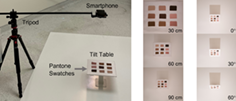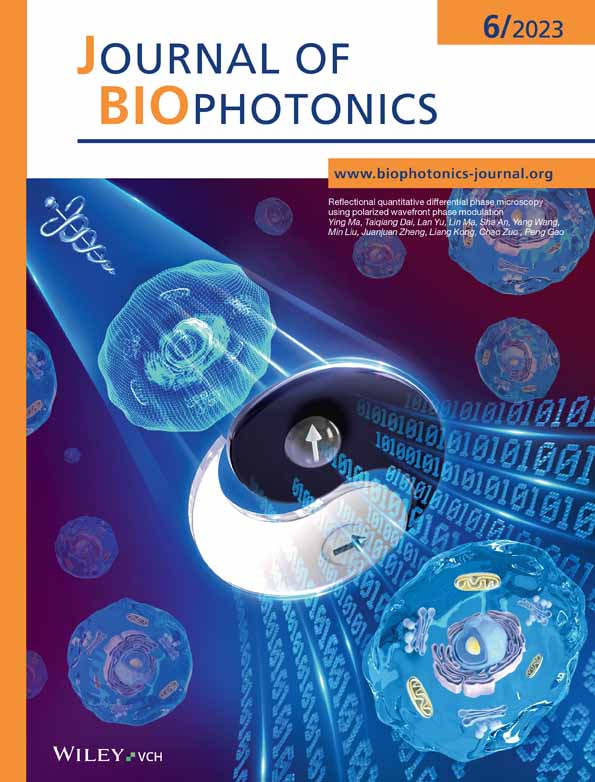Effect of camera distance and angle on color of diverse skin tone-based standards in smartphone photos
Abstract
Accurate and reproducible color capture is vital in medical photography. Camera distance and angle are particularly important as they are highly variable in a clinical setting. To account for variability in illumination, camera technology, and geometric effects, color standards are often used for color correction. To explore how geometry affects color, we quantified the change in CIELAB color value of a color standard for diverse skin tones at varying smartphone camera distances and angles. Whereas both chromaticity (a* and b*) and lightness (L*) were affected by angle, distance only affected L* (standard error of measurement, SEM > 1 CIELAB unit). Flash usage did not generally reduce distance and angle associated variability. Compared to compressed (JPG) format, raw (DNG) images had decreased median variability across different distances and angles. These findings suggest that in medical photography, inconsistent camera distance and angle can increase variability in photographed skin appearance over time.
Open Research
DATA AVAILABILITY STATEMENT
The data that support the findings of this study are available from the corresponding author upon reasonable request.




